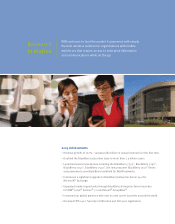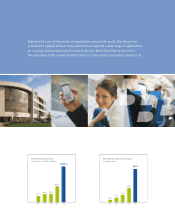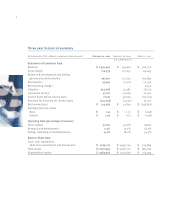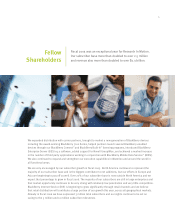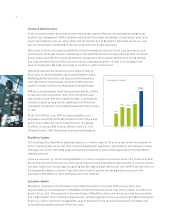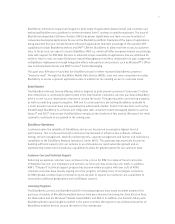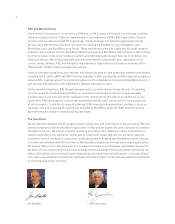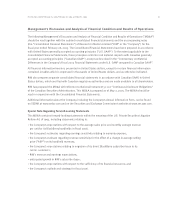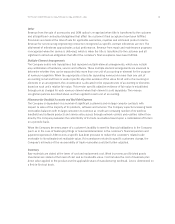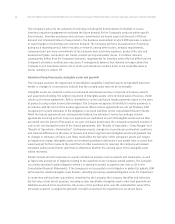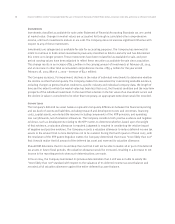Blackberry 2005 Annual Report Download - page 14
Download and view the complete annual report
Please find page 14 of the 2005 Blackberry annual report below. You can navigate through the pages in the report by either clicking on the pages listed below, or by using the keyword search tool below to find specific information within the annual report.
12
Critical Accounting Policies and Estimates
General
The preparation of the Consolidated Financial Statements requires management to make estimates and
assumptions that affect the reported amounts of assets, liabilities, revenues and expenses and the disclosure
of contingent assets and liabilities. These estimates and assumptions are based upon management’s historical
experience and are believed by management to be reasonable under the circumstances. Such estimates and
assumptions are evaluated on an ongoing basis and form the basis for making judgments about the carrying
values of assets and liabilities that are not readily apparent from other sources. Actual results could differ
significantly from these estimates.
The Company’s critical accounting policies and estimates have been reviewed and discussed with the Company’s
Audit Committee. Except as disclosed below, there have been no changes to the Company’s critical accounting
policies and estimates from those disclosed as at February 28, 2004.
Revenue recognition
The Company recognizes revenue when it is realized or realizable and earned. The Company considers revenue
realized or realizable and earned when it has persuasive evidence of an arrangement, the product has been
delivered or the services have been provided to the customer, the sales price is fixed or determinable and
collectibility is reasonably assured. In addition to this general policy, the following paragraphs describe the
specific revenue recognition policies for each major category of revenue.
Handhelds
Revenue from the sale of BlackBerry handhelds is recognized when title is transferred to the customer and
all significant contractual obligations that affect the customer’s final acceptance have been fulfilled. Provisions
are made at the time of sale for warranties, royalties and estimated product returns. For hardware products
for which the software is deemed not to be incidental, the Company recognizes revenue in accordance with the
American Institute of Certified Public Accountants Statement of Position 97-2, Software Revenue Recognition
(“SOP 97-2”).
If the historical data the Company uses to estimate product returns does not properly reflect future returns,
these estimates could be revised. Future returns, if they were higher than estimated, would result in a
reduction of revenue. To date, returns of handhelds and other products have been negligible. As a result,
the Company’s accrual with respect to such product returns is not significant.
Service
Revenue is recognized rateably on a monthly basis when the service is provided. In instances where the
Company bills the customer prior to performing the service, the prebilling is recorded as deferred revenue.
Software
Revenue from licensed software is recognized at the inception of the license term and in accordance with
SOP 97-2. Revenue from software maintenance, unspecified upgrades and technical support contracts is
recognized over the period that such items are delivered or that services are provided.
Research In Motion Limited •Incorporated Under the Laws of Ontario (In thousands of United States dollars, except per share data, and except as otherwise indicated)


